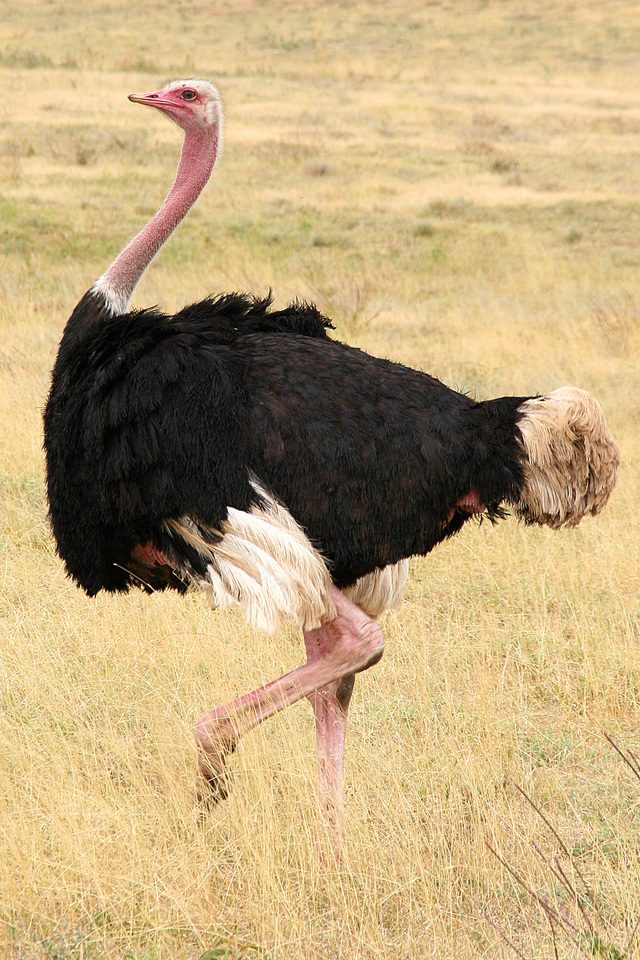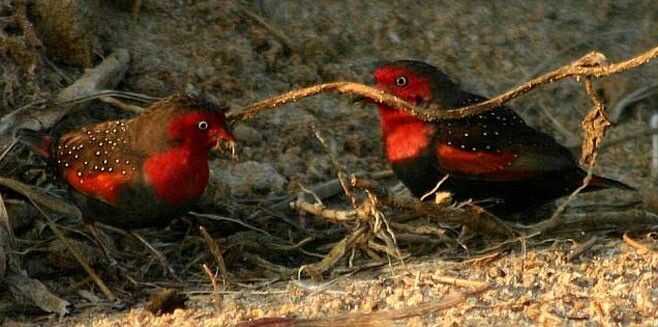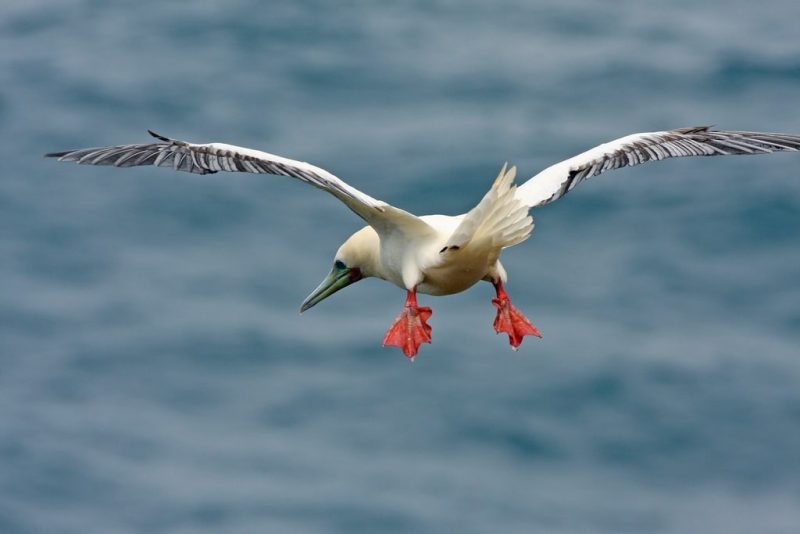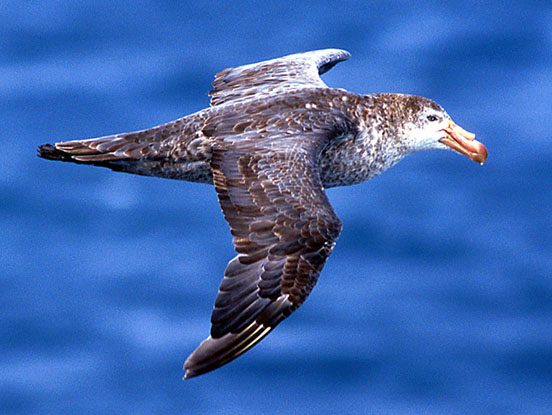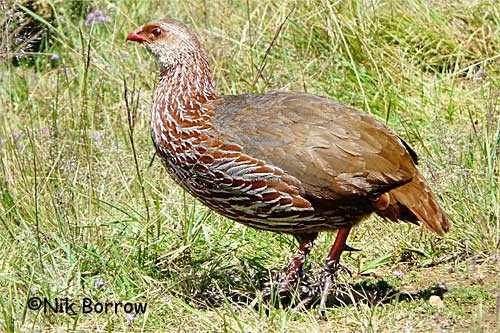The Iconic Ostrich Bird Of Kenya
Ostriches have inspired civilizations and cultures for many centuries in Mesopotamia and Egypt. Today, it is found natively in Africa. There are five species of ostriches around eastern and central Africa. The different species are similar but vary in color and size. The ostrich is closely related to the New Zealand kiwi and the Australian emu. It is the largest bird in the world with a male ostrich growing around 2 meters tall. An average ostrich weighs around 200lb or 100 kg and measures 7-9ft in length. Hence, it is too heavy to fly and remains a flightless bird. But the flightless ostrich has the biggest eye of any animal. It measures 5cm across, allowing them to see predators at very long distances. The ostrich’s wings reach 2 meters and are used to shade chicks, in mating displays, to cover the skin of the upper legs, to conserve heat, and to change direction while running.
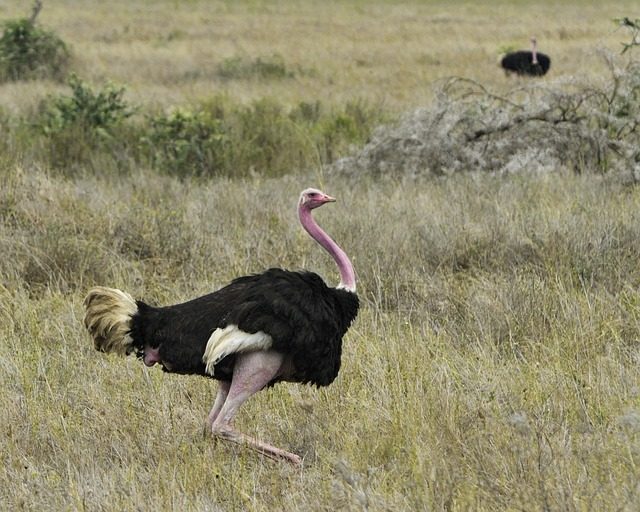
The iconic ostrich bird of Kenya
Speed of running
Ostrich is the fastest biped that can sprint at speeds of 50 miles or 70 kilometres per hour covering 5m in a single stride, but for short periods of time. It has huge razor-sharp velociraptor-feet. The two toes, with the large nail of the inner bigger toe, on each foot, which resembles a hoof, aids in running.
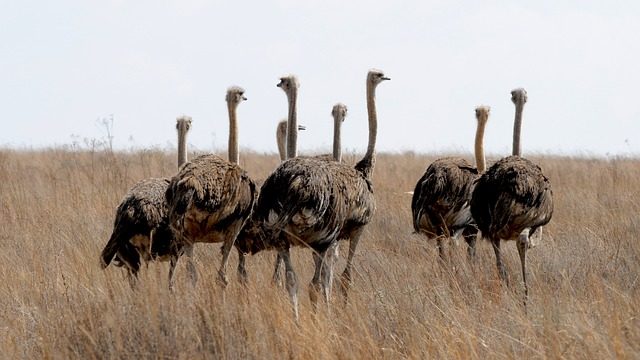
South Africa
Lifestyle in herds
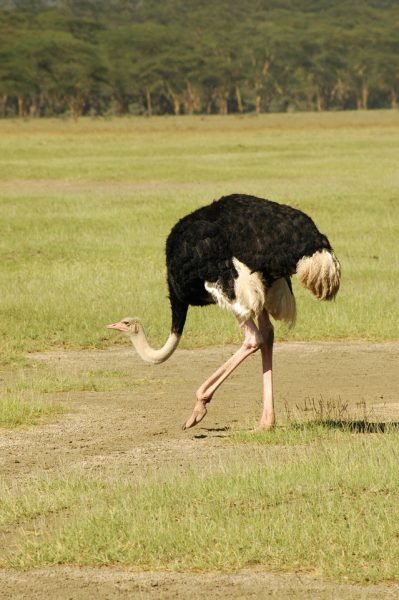
Ostrich
Ostriches live in herds that consist of one male, his hens, and their offspring. During rainless season and breeding periods, they live in herds of up to fifty birds that travel together. They typically spend winter in pairs or alone. Territorial fights between males for females usually last just minutes. However, they can easily cause death through banging their heads into opponents.
Wining and dining
The ostrich is an omnivore. Therefore, it eats a variety of both animals and plants. The diet mainly consists of grass, leaves, seeds, flowers, roots, and berries along with insects found on the ground and small reptiles and mammals. This bird is well known for burying its head in the ground to eat the bugs in the soil. Lacking teeth, it swallows small stones to grind its food. At any given time, an ostrich carries in its stomach 1 kg of stones. Ostriches can go on without drinking water for several days, using moisture in ingested roots, insects and seeds as well as metabolic water, but they enjoy baths when water is available. Ostriches have three stomachs. It secretes feces separately from urine, unlike all other living birds.
Meet and mate
Ostriches have an elaborated mating ritual. The cock beats the wings alternately until a mate approaches him. Then both of them proceed to the breeding area while the cock drives away all strangers. From here, it turns into a ritual. They browse until their mannerisms are synchronized. The cock then flaps the wings alternately again. He will also poke in the soil using his beak. He then flaps the wings to create a nest on the floor. While the female runs around the male with lowered wings, the cock will wind his head in a circular motion. At this time, she will drop, and he will mount on top of her for copulation. Unlike most birds, the male ostrich has a copulatory organ that is 20 cm long and retractable.
Laying of eggs
During the mating period, the alpha male makes a communal nest on the ground for the females to lay their eggs. Although there are around 20 eggs in the nest, only a couple of these eggs hatch as jackals and hyenas eat them up. After six weeks, the chicks hatch out. The giant eggs are the largest of any bird species. They are 15 cm long, ten times bigger than the chicken egg and weigh two dozen chicken eggs. But relative to the size of the ostrich, they are the smallest eggs. Due to its size, the egg is considered a delicacy in many human cultures. The eggs are incubated by the male by night and by the mother by day, using the coloration of the sexes to escape detection, as the black cock is undetectable in the dark, while the drab female blends in very well with the sand. When the eggs hatch after the 45-day incubation, the alpha male defends the chicks from danger and feeds them, although females and males cooperate in rearing chicks.
Escaping the predators
Due to the immense power and sheer size of the ostrich, it has few natural predators. The main ones are lions, cheetahs, hyenas, and crocodiles. Humans hunt the ostrich for its feathers and meat. When threatened, ostrich runs away although its long, sturdy legs can be like weapons capable of killing the predators with a powerful forward kick. It can be deadly to most mammals. They have been known to kill or disembowel attackers with a single blow using their powerful legs. It is highly advised to take precaution while approaching this fellow biped.
Head in the sand
Contrary to widespread belief, ostriches do not bury their heads in the sand. At the approach of predators or trouble, the bird takes a defensive behavior of lying low and flat, pressing its long neck to the ground to become less visible. In this posture, its plumage blends well with sandy soil. From a distance, it gives the appearance that it has buried its head in the sand.
Maasai ostrich farm
The ostrich population has declined in the last two centuries, with most surviving birds in farms or game parks. Kenya’s largest ostrich farm, the Maasai Ostrich Farm, was founded in 1991 and is situated 45 kilometers outside of Nairobi. Ostriches at the Maasai ostrich farm are domesticated. There are around 700 birds at the farm. They are two breeds, the Somali or blue-neck ostrich, and the Maasai ostrich. It provides the visitors an opportunity to ride the largest species of bird, which very few ostrich farms around the world allow. Amusingly, two attendants run along either side the entire time, so the bird remains at a steady pace. The Maasai Ostrich Farm ships its decorative feathers, its skin for leather products, its meat, and live ostrich abroad and throughout Kenya. The farm also uses ostriches to race each other on their backs with saddles, bits, and reins. Jockeys train at this farm for these ostrich races.
5 Frequently asked Questions About Ostrich
To receive a colourful digibook about birds with videos, images and text, please fill out the following form or simply email us on safaris@safari-center.com

